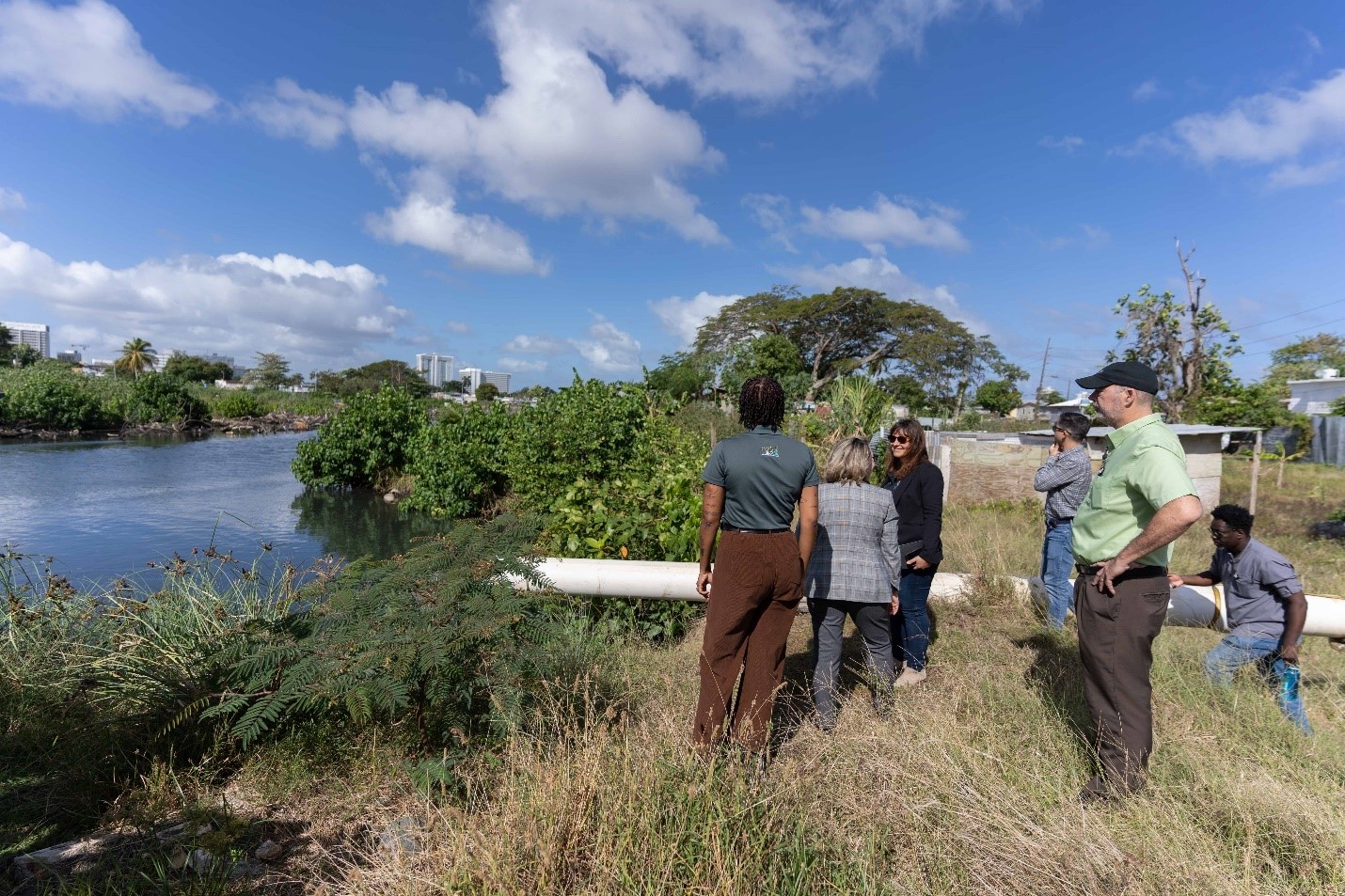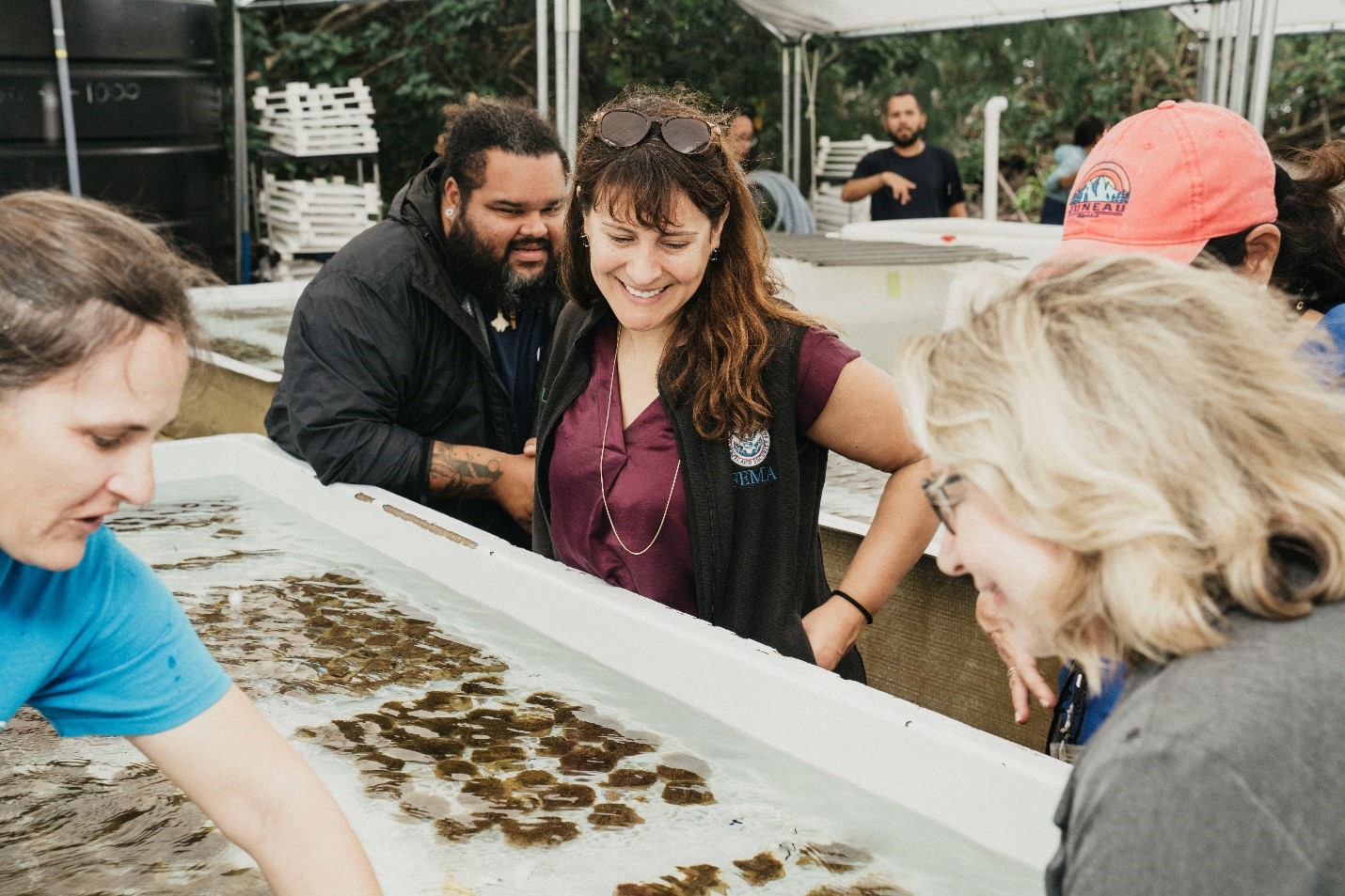Guaynabo, Puerto Rico – The Federal Emergency Management Agency (FEMA) is leading efforts to develop resources and guidance for communities to understand and fulfill their critical role in achieving comprehensive resilience, while preparing for future natural disasters.
As part of these efforts, FEMA’s senior official performing the duties of deputy administrator for Resilience, Victoria Salinas, visited the island to assess how hazard mitigation measures in several Puerto Rico reconstruction projects will help communities prepare for nature’s future challenges.
An 86 percent of the projects under the Public Assistance Program for damage following Hurricane María have funding for hazard mitigation measures. To date, FEMA has allocated nearly $32 billion for over 10,900 projects under this disaster.
Meanwhile, the agency has also obligated over $3 billion for 198 Hazard Mitigation Grant Program (HMGP) projects to strengthen Puerto Rico’s resilience to future weather events.
“For FEMA, resilience is critical to prepare communities, reduce suffering and accelerate recovery. Puerto Rico has a large number of projects that will exemplify resilience and which can be replicated for future disasters. Salinas’ visit reiterates the agency’s efforts to continue promoting a strong, long-term recovery for future generations,” said Federal Disaster Recovery Coordinator José G. Baquero.
During her visit, Salinas participated in a tour of Caño Martín Peña, a 3.75-mile channel located within the San Juan Bay National Estuary. Extreme weather events, such as Hurricanes Irma and María in 2017, increased damage to this channel, which was already clogged with debris, sediment and organic residue.
Salinas and other FEMA hazard mitigation leaders received an update on the status of the ENLACE Project, which brings together the three entities working for the physical, environmental and socioeconomic development of the eight Caño communities.
FEMA has allocated nearly $35 million through its Hazard Mitigation Grant Program (HMGP) to contribute to the rehabilitation of the San Juan Bay National Estuary. The project involves work to the stormwater systems, infrastructure and sanitation system. The work will provide resilience to the community by improving the living conditions, health and safety of their environment.
As part of her tour, Salinas stressed the importance of community participation; of technical experts valuing the community wisdom; and of recovery having a holistic perspective, addressing mental health, economic development, and preparedness for future events and flooding, among other factors.
“Often, agencies are filled with technical experts. We need our technical experts. But something that’s happened here — and is unique but should be replicated — is that technical solutions are always a range of options. And the community has been involved in looking at those options and seeing what makes the most sense for them. [...] And the fact that the process that has gone on has allowed for that dialogue is a way to do work in partnership with the people who benefit from the work,” said Salinas.
Another important visit by the FEMA Mitigation team that exemplifies resilience was to the Coral Reef Nursery in Ceiba at the Center for Research and Restoration of Marine Organisms (CIROM, in Spanish). This is the first land-based coral and sea urchin nursery in Puerto Rico and is a project managed by the Institute for Socio-Ecological Research (ISER), a nonprofit organization that develops innovative research on coral reef ecological restoration, clean water and climate change science.
FEMA approved nearly $39 million in funding to complete the restoration of the coral reef barrier in the San Juan metropolitan area. This mitigation project aims to reduce flooding and protect nearly 800 structures surrounding the communities of Escambrón, Condado, Ocean Park and Puntas Las Marías in the capital.
Likewise, Salinas visited the Center for Puerto Rico (CPPR, in Spanish), the operating branch of the Sila María Calderon Foundation, to learn about the Center’s initiatives focused on addressing community empowerment, poverty reduction and inequality. With the help of FEMA’s HMGP funds, CPPR will install solar panels at eight community technology centers to ensure that services to these communities are not interrupted during disasters.
Salinas also held meetings with some tourism industry officials to initiate the development of projects that consider the effects of climate change and address coastal erosion. These meetings were the beginning of the agency’s collaboration with the industry to move these initiatives forward.
For more information about Puerto Rico’s recovery, visit fema.gov/disaster/4339, fema.gov/disaster/4473 and recovery.pr. Follow us on our social media at Facebook.com/FEMAPuertoRico, Facebook.com/COR3pr and Twitter @COR3pr.
Caño Martín Peña, San Juan, PR

San Juan, Puerto Rico (January 23, 2024) – The Federal Emergency Management Agency (FEMA) supports efforts to develop resources that help communities in achieving comprehensive resilience while preparing for future disasters. As part of these efforts, FEMA’s deputy administrator for Resilience in Washington, Victoria Salinas, visited Puerto Rico to assess how hazard mitigation measures in several reconstruction projects will help communities prepare for nature’s future challenges. During her visit, Salinas participated in a tour of Caño Martín Peña, a 3.75-mile channel located within the San Juan Bay National Estuary. Photo FEMA/Eliezer Hernández
Coral Reef Nursery in Ceiba, PR

Humacao, Puerto Rico (January 25, 2024) – FEMA’s deputy administrator for Resilience in Washington, Victoria Salinas visited the Coral Reef Nursery in Ceiba at the Center for Research and Restoration of Marine Organisms (CIROM, in Spanish). This is the first land-based coral and sea urchin nursery in Puerto Rico and is a project managed by the Institute for Socio-Ecological Research. Photo FEMA/Eduardo Martínez

